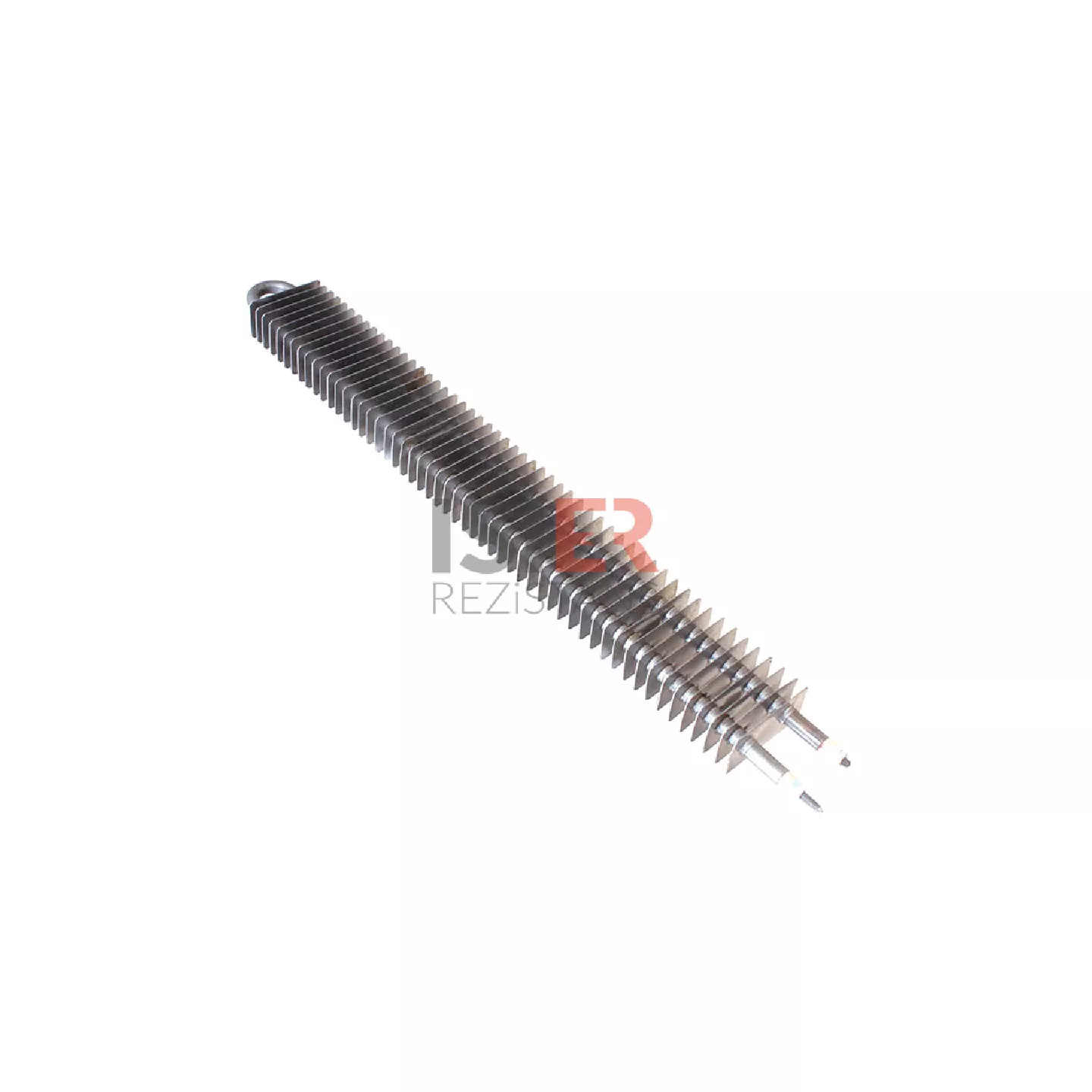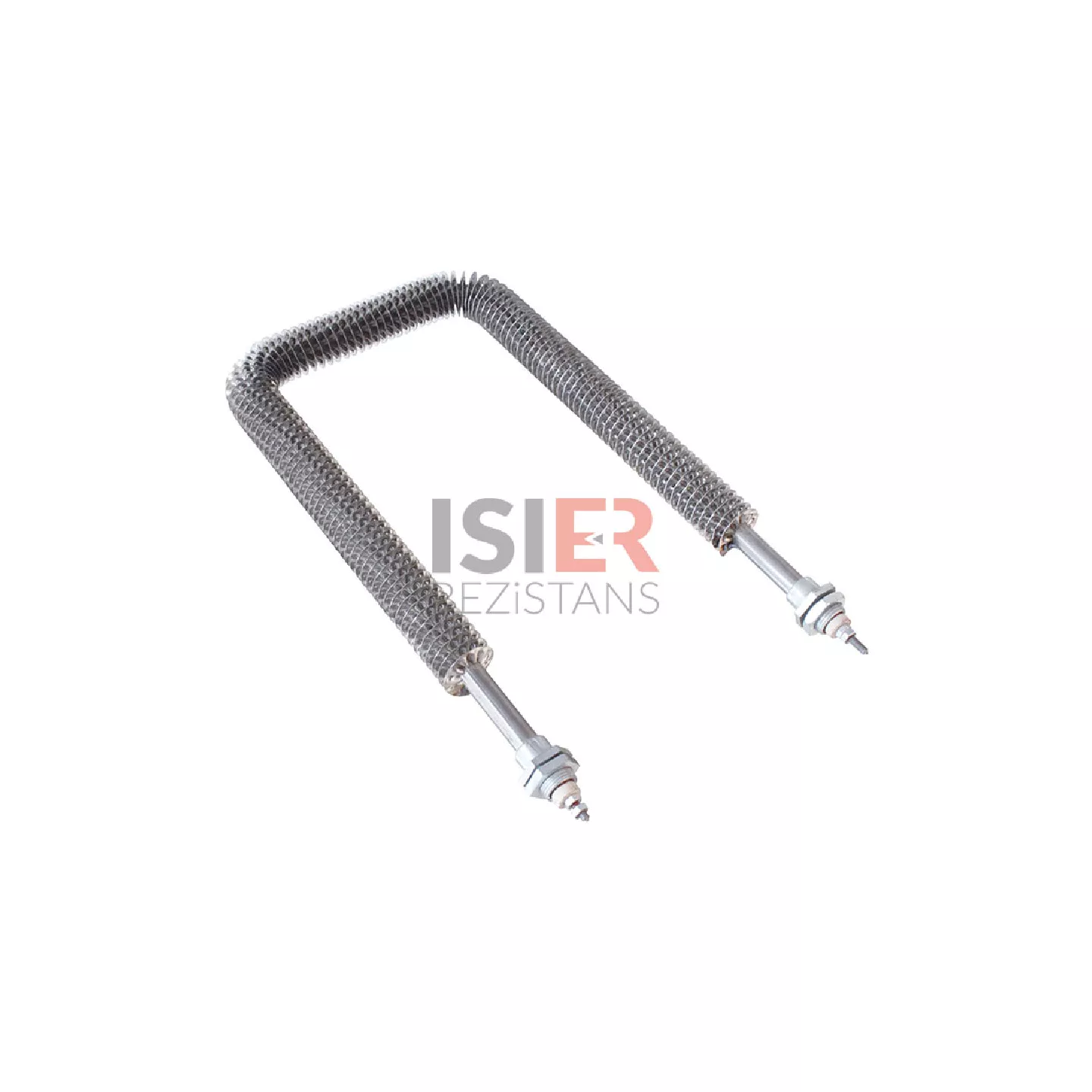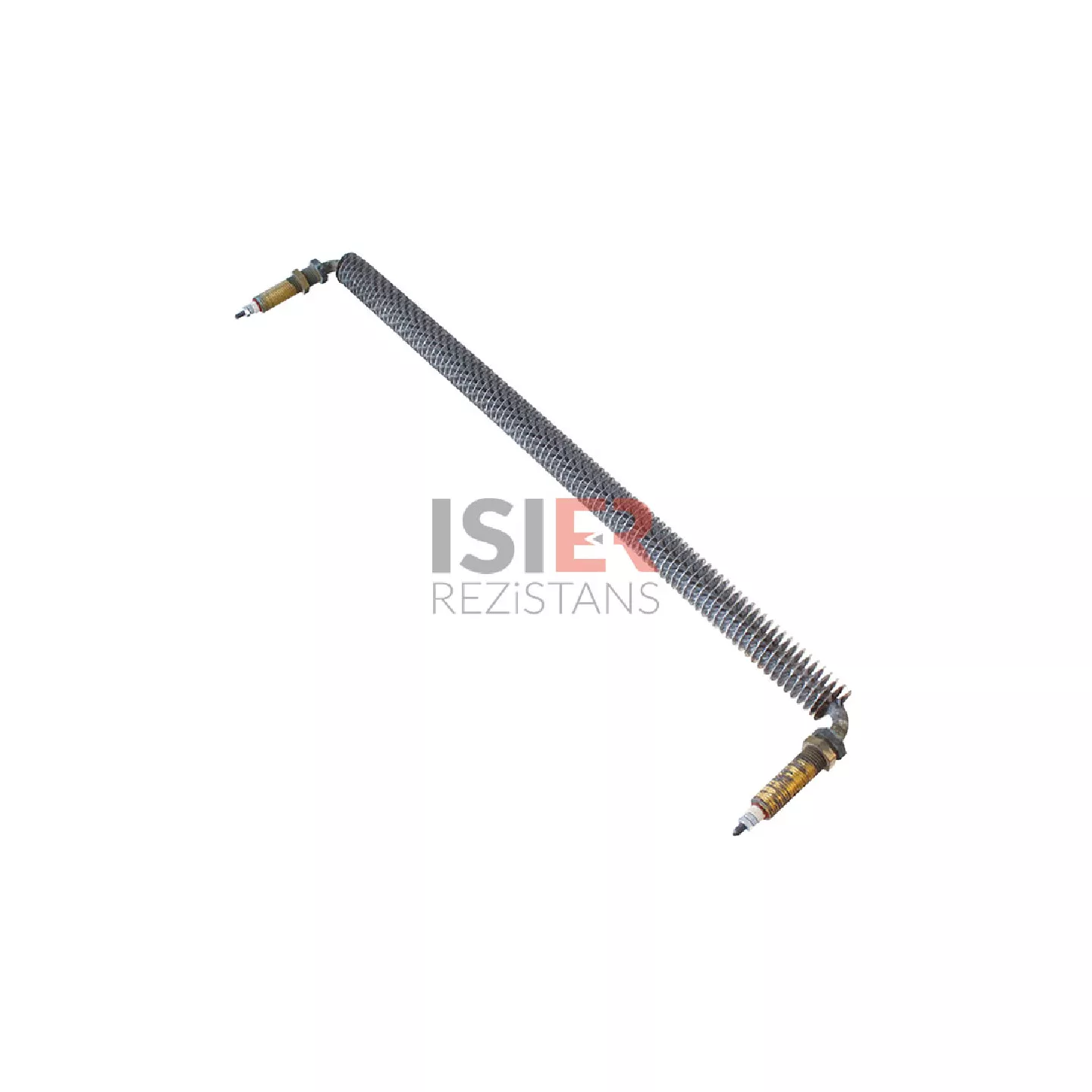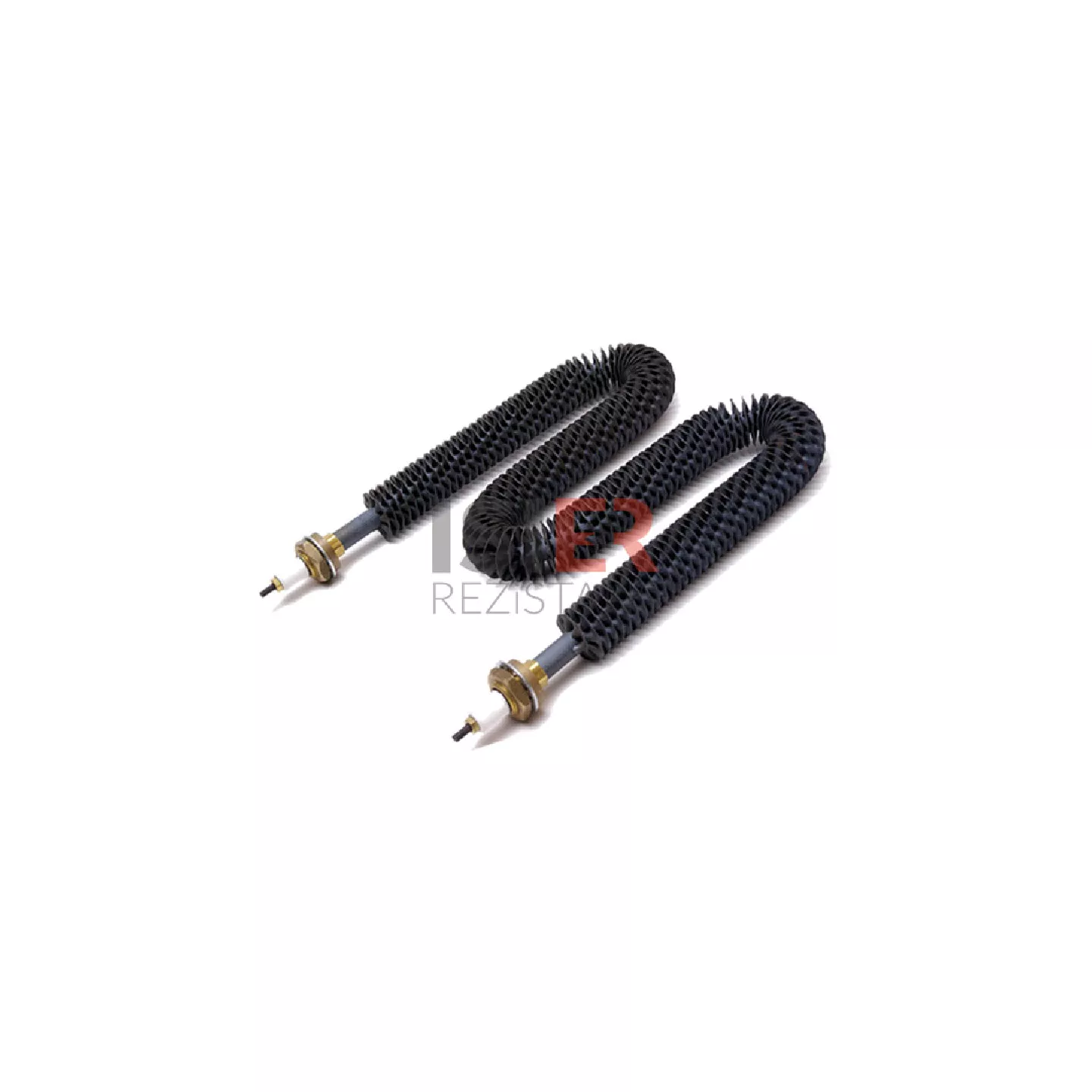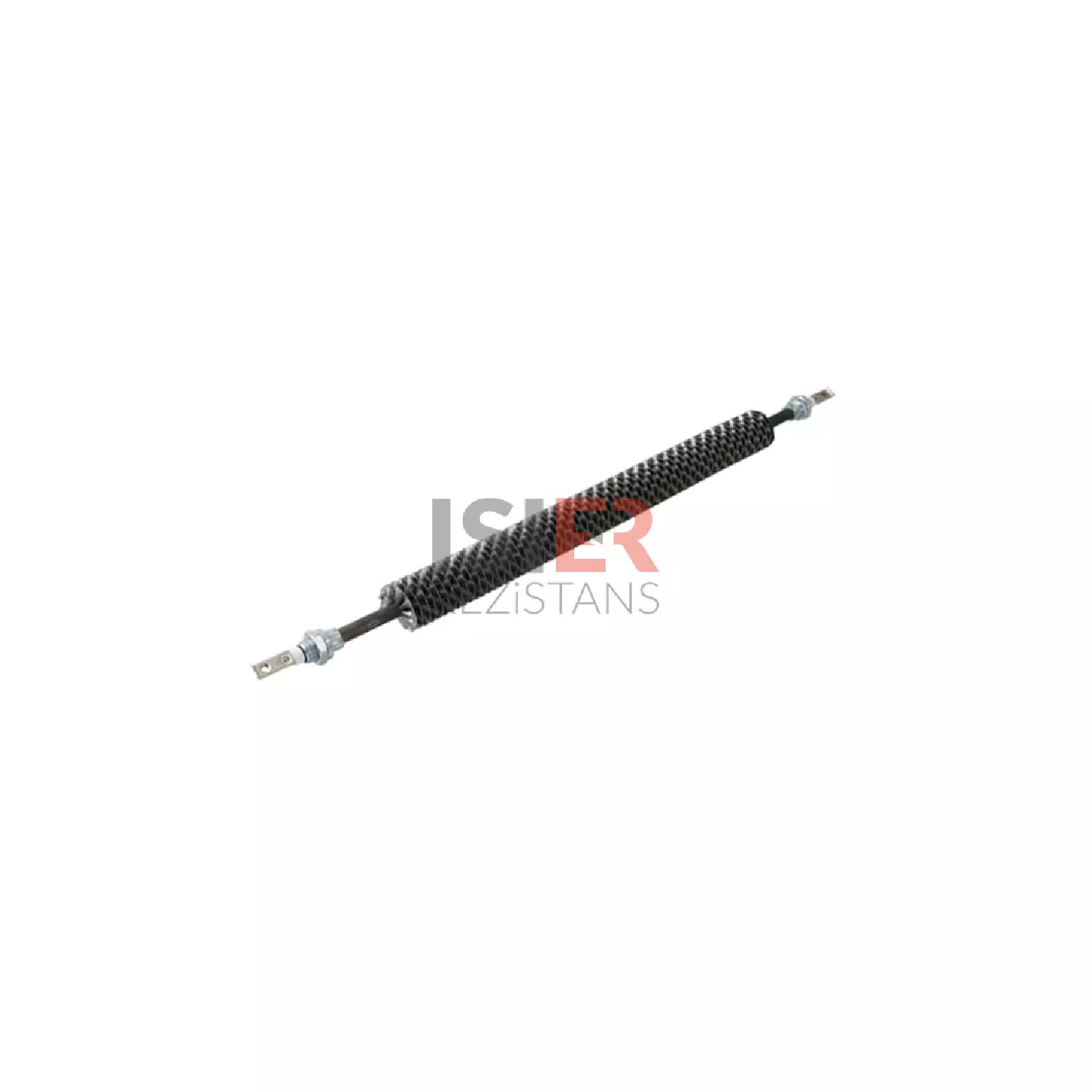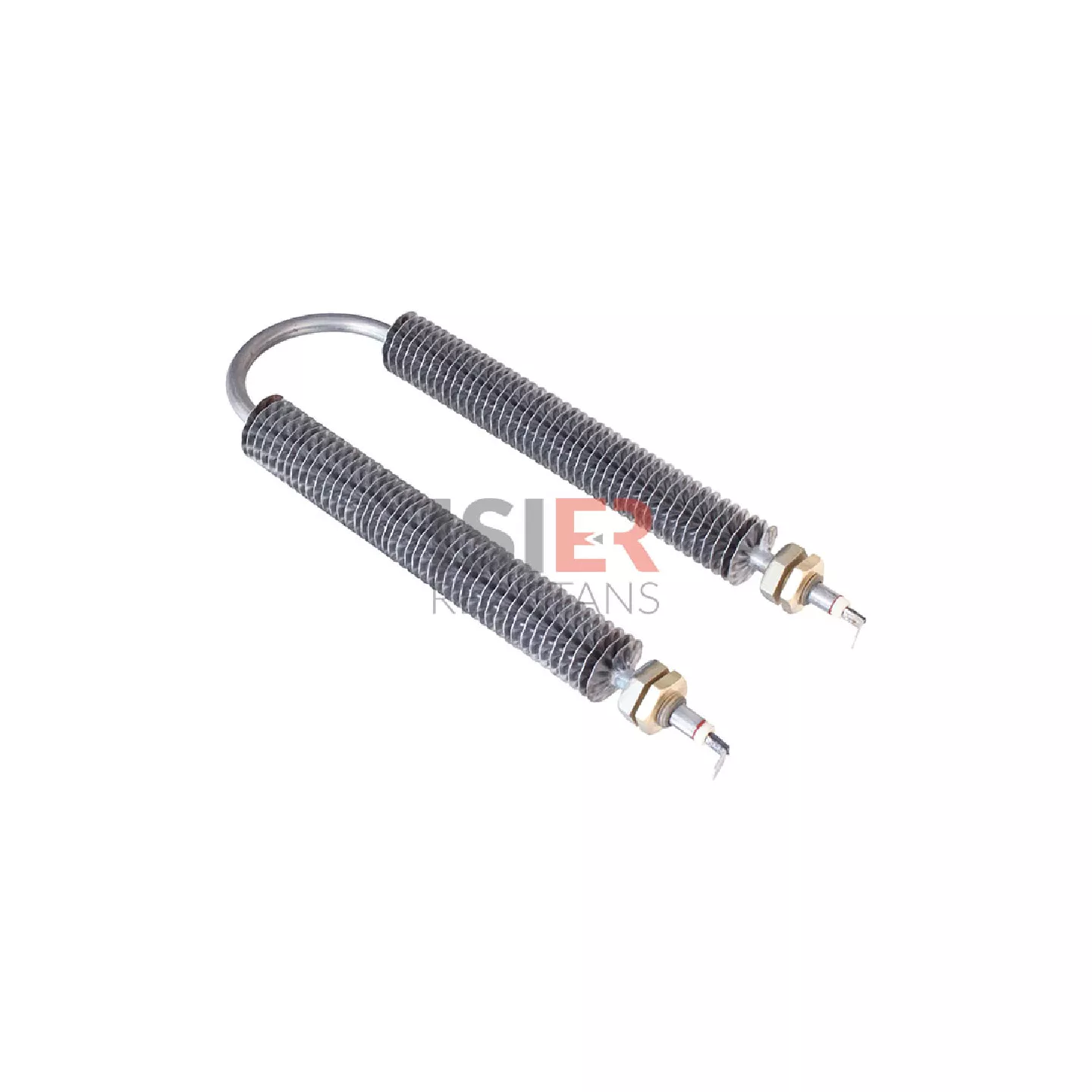Serpantine Heaters
Serpentine Heaters are one of the most commonly used resistance types in air blowing, fan type heating systems and provide heat transfers by air circulation. Heating elements of serpentine resistors are generally produced from Cr-Ni pipes. In addition, serpentine heaters are also produced with copper and DKP pipes. Glands are added to the heads of heaters in general to ensure easy installation. In this way, Serpantine Heaters
installation is carried out more easily and quickly. In this way, serpentine resistance installation is carried out more easily and quickly. After collecting the heat generated on the surface of the heater on itself, it is designed as a leaf or helix on the heater as CR-NO and DKP to transfer the heat collected to the desired area or area.
Pipe diameters range from 6.5 to 20 mm, but serpentine diameters can vary between 20 mm and 50mm in direct proportion to this. Serpentine Heatres can be produced with feed voltages between 24 V and 500 V DC. The pipe material and serpentine material used in the production of this type of resistance are determined specifically according to the place where the resistance will be used. Production, production can be made using special stainless pipes and serpentines of type 310 S and alloy800-alloy600 in high temperature environments. In addition, if corrosion is present in the environment where Serpantine Heaters are present, pipe and serpentine material can be preferred as 316 L and alloy825.
Technical Information
Serpantine Heaters can be produced in different sizes and shapes. For example, if you want to use flat rod serpentine resistors can be produced at a minimum length of 200 mm and 6600 mm in length, while U-type Resistors can be produced at a minimum length of 150 mm maximum 3200 mm. In addition, M type and circular helezonic type serpentine resistances are produced by our company.
The main use area of Serpantine Heaters is fan type heating systems. In addition, Serpentine Heatres are used in the construction sector to heat the air outlets in buildings, hotels, public buildings and health institutions. Apart from these, it is specially designed and manufactured in accordance with the environment in which it is present in all processes requiring industrial drying in all industrial branches.
What is a Serpantine Heater?
A serpantine heater is a heating system that operates using electric current. Its serpentine structure allows for maximum surface area coverage of the substance to be heated. Serpantine heaters can typically be used for heating water, oil, gas, or other substances. They can be designed for industrial, automotive, and residential applications and can have many different technical specifications.
Serpantine Heater Technical Specifications
Among the technical specifications of a “serpantine” heater, the following may be found:
Operating Voltage: Typically ranging between 110V-240V.
Operating Current: The amount of electrical current required for operation.
Heating Capacity: Determined by the volume or weight of the substance to be heated.
Dimensions: Length, width, and thickness of the “serpantine” heater.
Mounting Options: How the “serpantine” heater can be mounted (flat, spiral, etc.).
Material: The type of material used in the construction of the “serpantine” heater (nickel alloy, brass, etc.).
Temperature: The maximum operating temperature of the “serpantine” heater.
Heat Distribution: How the “serpantine” heater distributes heat energy.
Corrosion Resistance: The ability of the “serpantine” heater to resist corrosion.
Serpantine Heater Usage Areas
Industrial: Providing heat for water and air heating, radiators, steam production, supplying heat for chemical reactions.
Automotive: Heating of engines or oil fluids, heating fuel tanks.
Domestic: Water heaters, refrigerators, ice-making machines, heating steam boilers.
Medical: Heating water for operating rooms, sterilization devices, hospital bathrooms.
Chemical and Petroleum Industry: Reactor heating, solution heating, solution concentration control.
Serpantine Heater Types
Flat Serpantine Heater: Simple design with a wide range of applications.
Spiral Serpantine Heater: Compact design providing maximum heat distribution over the surface.
Double Serpantine Heater: Consists of two “serpantine” coils wrapped around each other, offering higher performance for heat transfer.
Triple Serpantine Heater: Designed with three “serpantine” coils wrapped around each other for maximum heat transfer.
Mini Serpantine Heater: Small-sized “serpantine” heaters suitable for customized applications.
Segmented Serpantine Heater: Offers separate heating zones for different areas, catering to customized needs.
Serpantine Heater Technical Specifications
Serpantine heaters have various features. While tube diameters range from 6.5 to 20 mm, “serpantine” diameters can vary between 20 and 50 mm. These heaters can be used with supply voltages ranging from 24V to 500V DC.
The choice of tube material and serpantine material used in production is determined based on the environment in which the heater will be used. In high-temperature environments, special stainless steel tubes and “serpantines” such as 310 S and alloy800-alloy600 can be used. For environments with corrosion risks, materials like 316 L and alloy825 are preferred.
“Serpantine” heaters can be produced in different sizes and shapes. For example, flat bar “serpantine” heaters can be manufactured with lengths ranging from a minimum of 200 mm to a maximum of 6600 mm, while U-type heaters can be produced with lengths ranging from a minimum of 150 mm to a maximum of 3200 mm. Additionally, M-type and circular helical “serpantine” heaters are also available.
The primary application of these heaters is in fan-assisted heating systems. They are also used to heat the air exiting air ducts in buildings, hotels, public buildings, and healthcare facilities. Moreover, they can be specially designed and manufactured for any processes requiring industrial drying.
The technical specifications of serpantine heaters are as follows:
Technical Specifications:
Operating Voltage: Typically within a voltage range of 110V to 240V.
Operating Current: The amount of electrical current required for operation.
Heating Capacity: The heating capacity determined depending on the substance to be heated, usually measured based on volume or weight.
Dimensions: Physical dimensions such as length, width, and thickness of the “serpantine” heater.
Mounting Options: Compatibility with flat, spiral, or other mounting methods.
Material: Can be made of materials like nickel alloy, brass, etc.
Maximum Operating Temperature: The maximum temperature level the “serpantine” heater can withstand.
Heat Distribution: How the “serpantine” heater distributes heat energy, ability to provide homogeneous heating.
Corrosion Resistance: The level of resistance against corrosion, particularly important if used in chemical environments.
Serpantine Heater Types
Flat Serpantine Heaters: With their simple designs, they have a wide range of applications.
Spiral Serpantine Heaters: Their compact structures provide maximum heat distribution over the surface.
Double Serpantine Heaters: By winding two “serpantine” coils together, they ensure higher heat transfer.
Triple Serpantine Heaters: Designed with three “serpantine” coils wound together to maximize heat transfer.
Mini Serpantine Heaters: Used in customized applications due to their small dimensions.
Segmented Serpantine Heaters: Provide the ability to heat different zones separately, thus catering to customized needs.




